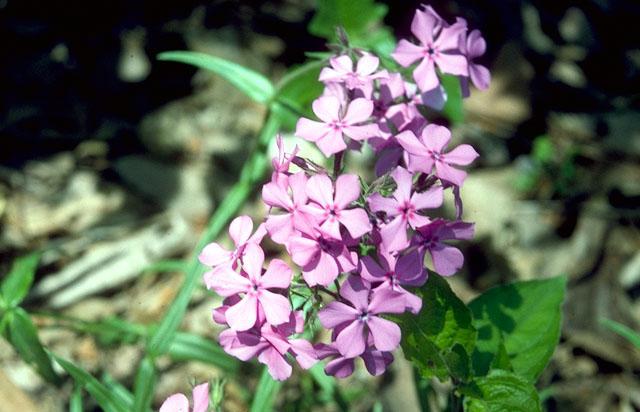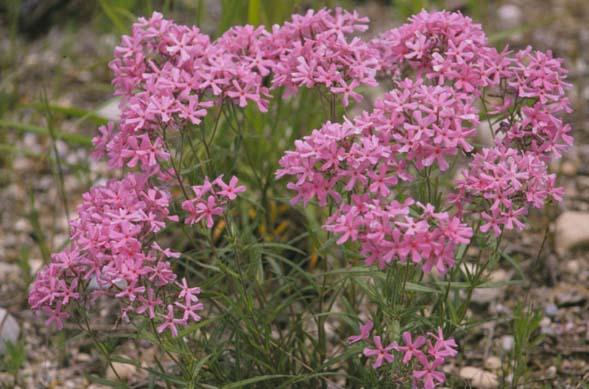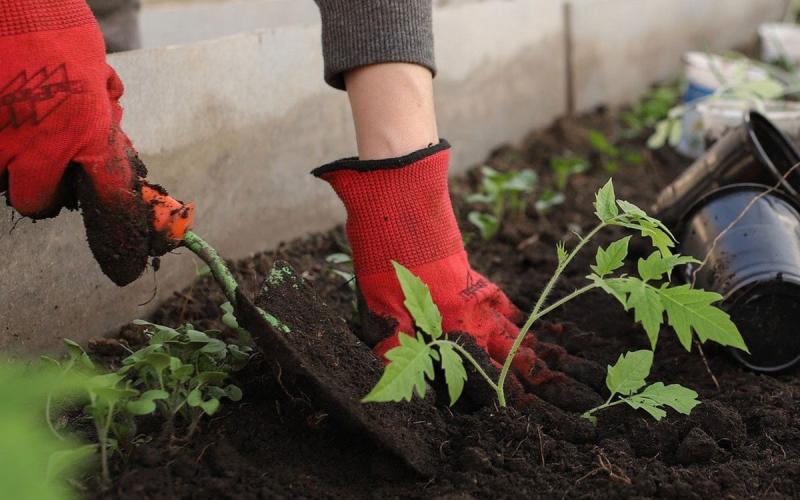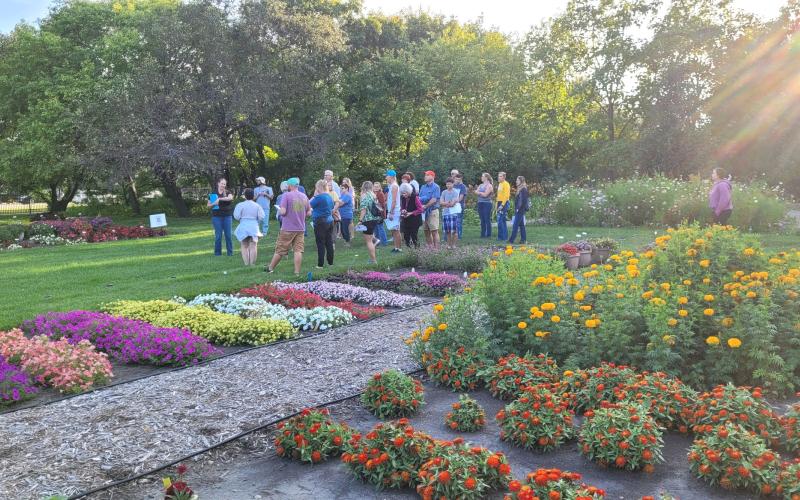Profile
This week’s native perennials are both phloxes: Phlox divaricata (Wild Blue Phlox, or Sweet William) and Phlox pilosa (Downy or Prairie Phlox). Once planted and established, these flowers will come back every year, adding early color and food for butterflies and pollinators to your garden.

Phlox divaricata
- Scientific name: Phlox divaricata
- Common names: Wild Blue Phlox, Sweet William
- Plant size: 1-2 ft. tall
- Flower color: Blue
- Bloom period: May to June
- Growing conditions: Light to medium shade
- Why you should plant it? Blooms early, attracts hummingbirds

Phlox pilosa
- Scientific name: Phlox pilosa
- Common names: Downy Phlox, Prairie Phlox
- Plant size: 1-2 ft. tall
- Flower color: Pink to lavender
- Bloom period: May to June
- Growing conditions: Sun to part shade, well-drained soils
- Why you should plant it? Blooms early, attracts hummingbirds
Characteristics
Phlox flowers have 5 petals that are fused at the base to form a long tube. These plants are pollinated by insects with long mouthparts, like butterflies and some moths (hawk moths in particular) as well as hummingbirds. Bees will visit these plants. Carpenter bees and bumble bees have been observed stealing nectar from the flowers. Since their mouthparts are not long enough to reach it from the top of the flower, the bees will chew a hole in the side of the tube near the base and take the nectar.
Phloxes bloom early, in late May through June. These early blooms are important food sources for butterflies, moths, and hummingbirds. Both plants grow to about 1-2 feet tall and prefer some amount of shade. The flowers form clusters at the top of each stem and are excellent additions to spring bouquets. Sweet William has blue flowers, while Downy Phlox flowers are pink to lavender.
Other Varieties
Other native phloxes include Phlox alyssifolia, Phlox andicola, Phlox hoodii, and Phlox diffusa. These phloxes may be unavailable in local greenhouses but seed may be obtained from specialty native plant retailers. Do not remove plants from wild prairie habitats.


